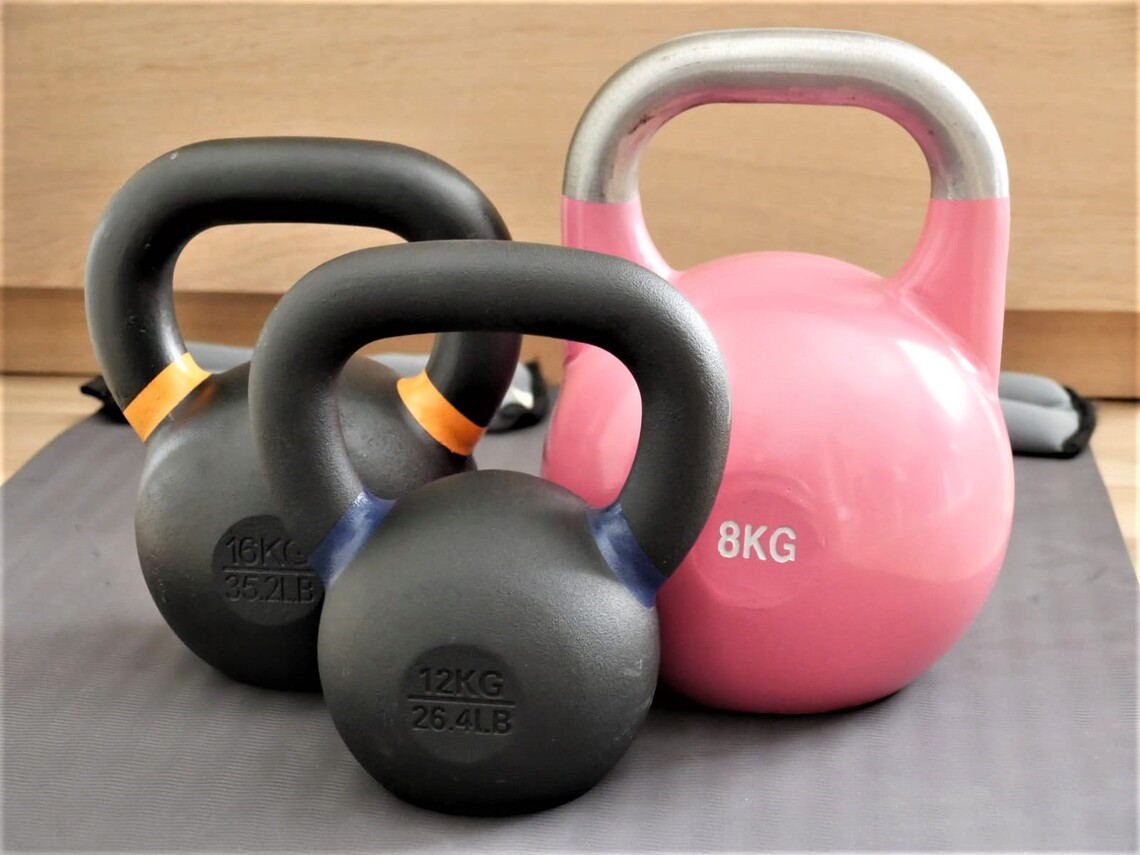Choosing Your Kettlebells
Date Posted:20 April 2020

The Kettlebell
Kettlebell is a weighted exercise equipment shaped like a kettle. Apart from its unique appearance, the ultimate purpose of a Kettlebell’s design is its functionality.
The weight of a Kettlebell is not distributed evenly. It's center of mass extends beyond the hand, therefore it facilitates ballistic movements and also encourages swinging and releasing movements while building grip strength. The unique shape of Kettlebell creates an "unstable force" for handling, which is key to effective kettlebell exercises. Kettlebell is just the perfect tool to simultaneously strengthening multiple parts of our body, all the way from our core to our fingers.
Kettlebells are not merely effective for strength-building, but also great for many aspects of physical fitness. With a Kettlebell, you could perform many common strength movements (presses, curls, rows, extensions, etc). The real magic of Kettlebells however lies is in ballistic and compound movements - swings, throws, snatches, cleans and jerks. Because movements performed with a Kettlebell require full body muscular effort, it helps to also significantly improve muscular-endurance, cardiovascular capacity, agility and mobility.
Kettlebell is also perfect for functional fitness. If you workout with Kettlebell regularly, you will find it much easier lifting daily/regular items (shopping bags, luggages, buckets, laundry, trade tools, etc). You could possibly lift your child/partner with less effort too! In other words, by enhancing your fitness level, Kettlebells can help improve the quality of your daily life.
Choosing your Kettlebells
How do you choose the right kettlebell? There's technically no right kettlebell. It really depends on what you are going to do with the kettlebell. There are 3 common types of kettlebell:
- Cast Iron Kettlebell
- Pro-Grade Kettlebell (AKA Steel or Competition Kettlebell)
- Vinyl-Dipped Kettlebell
For basic kettlebell exercises such as kettlebell deadlift, farmer's walk or slingshot, any kettlebells are generally suitable because they involve the simplest of movements and minimal interaction with the kettlebell. If you intend to do more with kettlebells, consider the below needs:
- Variety of stimulation to your muscles
- Efficiency and comfort
- Grip strength/endurance
- Effective balistic exercises
Variety of stimulation to your muscles
If you want your workout to give you a variety of stimulation to your muscles, you would want to go for cast-iron kettlebells. Unlike pro-grade/steel kettlebell, the handle and body mass of cast-iron kettlebells varies according to the weight. The heaver the cast-iron kettlebell, the larger the bell and the thicker the handle circumsference. You need to adjust your movements when switching weights hence allowing you to stimulate your muscles in many ways. You can perform more variety of exercises. Pro-grade/steel kettlebells are not inferior however. In fact pro-grade/steel kettlebells are often used in fitness competition (hence also called "competition kettlebells").
Efficiency and comfort
Pro-grade/steel kettlebells are designed for high-repetition workouts with complex movements where efficiency and comfort are most important. They have standardised body mass and handle circumsference so you don't have to re-learn muscle memory. This allows more efficient workout as you switch weights in between exercises with ease and comfort. On the flip side, lighter cast-iron kettlebells have smaller body mass and handle circumference than pro-grade/steel kettlebells. Thus for lighter weight kettlebells, some may prefer cast-iron kettlebells as they are less bulky and more comfortable to handle than pro-grade/steel kettlebells.
Grip strength/endurance
The body mass of cast-iron kettlebell varies by weight and so does the handle circumference hence you need to adjust your grip whenever you switch weights. Heavier cast-iron kettlebells especially 16kg and above also have thicker handles than that of pro-grade/steel kettlebells, thus requiring more grip strength and endurance holding on to the kettlebell. If you want to train your grip strength/endurance, cast-iron kettlebell is a better choice.
Balistic exercises
Pro-grade/steel kettlebells have a standardised and generally larger body mass than cast-iron kettlebells. This allows for better ballistic control when swinging and releasing the Kettlebell. If effective swinging movements is what you are after, pro-grade/steel kettlebell is a better choice.
Vinyl-dipped Kettlebell
What about vinyl-dipped kettlebell? It is actually just cast-iron kettlebell dipped in vinyl coating and hence the name "vinyl-dipped" kettlebell. The protective vinyl layer provides protection from scratching your flooring. It also provides some protection to your wrist and is an alternative to wrist-guard (although a wrist-guard is still generally recommended). Aside from these, vinyl-dipped kettlebell functions similarly to cast-iron kettlebell. Choosing between these two often comes down to individual preference. Some prefers the vibrant colours of vinyl-dipped kettlebells over the plain black/silver cast-iron kettlebells.
Choice of Weights
As a general guide, most women starts off with 4kg or 6kg kettlebell and slowly work their way up to 8kg to 12kg kettlebell. Men on the other hand often starts with 6kg or 8kg kettlebell and slowly work their way up to 10kg to 16kg kettlebell. This however, depends on your personal fitness goals. For general fitness, kettlebells weighing 4kg to 12kg would suffice. You may want to keep 16kg or 20kg pairs for different exercises such as kettlebell deadlift or farmers' walk.
If you are generally stronger or have a larger body build, you may want to choose kettlebells that are 2-4kg heavier than the general recommendation above. You may also need 20kg to 28kg pairs for kettlebell deadlift or farmers' walk. For the ambitious ones, 32kg to 48kg are not uncommon.
Bear in mind that there is no one size fits all. Ultimately, you want to choose weights that are challenging enough but not too heavy to handle. Kettlebells that are too heavy may cause injury and slow down your progress. Kettlebells that are too light are also equally ineffective. When making your choices, choose weights that you are comfortable handling for the kettlebell exercises you perform. Then gradually build your muscles and strength before switching to heavier ones as you progress.






